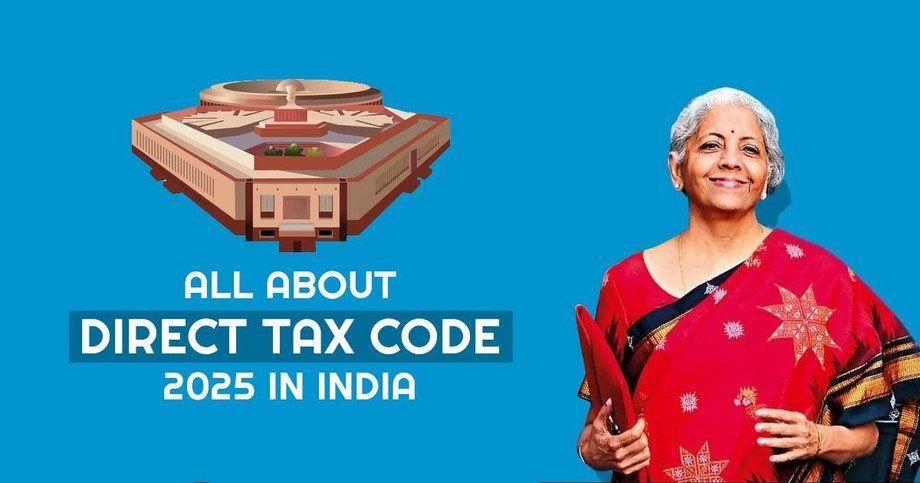India is on the verge of a significant tax reform with the introduction of the Direct Tax Code 2025. Replacing the Income Tax Act of 1961, this revolutionary change will take effect in April 2025, marking a major shift in how businesses and individuals manage their tax obligations. The direct tax code aims to modernize the taxation framework, enhance transparency, and simplify compliance. By addressing outdated provisions and reducing ambiguities, this reform is set to create a fairer and more efficient tax system.
Why the Direct Tax Code 2025 is Essential
India’s existing tax structure has been criticized for its complexity and inefficiency. The direct tax code 2025 seeks to resolve these issues by simplifying regulations and expanding the tax base. Currently, only 1% of the population pays income tax. With the direct tax code, the government aims to increase this to 7.5%, ensuring a more equitable contribution from citizens. By reducing exemptions and making compliance easier, the reform will promote voluntary adherence and minimize tax evasion.
Key Changes Under the Direct Tax Code 2025
The direct tax code 2025 introduces several major reforms to streamline taxation for individuals and corporations. These modifications are designed to ensure fairness, efficiency, and improved compliance.
1. Simplified Residential Status
The direct tax code eliminates the confusing category of “Resident but Not Ordinarily Resident” (RNOR). Taxpayers will now be classified simply as residents or non-residents, making tax obligations clearer and easier to understand.
2. Unified Financial Year Terminology
Under the direct tax code 2025, outdated terms such as “Assessment Year” and “Previous Year” will be replaced with Financial Year (FY). This change aligns India’s tax system with global standards, making tax reporting more straightforward.
3. Capital Gains Taxation Reform
The direct tax code will include capital gains as part of regular income. While this simplifies taxation, it may result in higher tax liabilities for those earning substantial capital gains.
4. Renamed Income Categories
To make income classification clearer, the direct tax code 2025 introduces new terminology. For example, “Income from Salary” becomes “Employment Income”, ensuring taxpayers better understand their tax brackets.
5. Standardized Corporate Tax Rates
The direct tax code establishes a uniform tax rate for domestic and foreign companies, promoting a level playing field and encouraging foreign investment in India.
6. Reduction of Exemptions and Deductions
A significant shift in the direct tax code 2025 is the reduction of exemptions and deductions. By closing loopholes, this reform ensures fair tax contributions across income groups.
7. Expanded Scope of TDS and TCS
The direct tax code expands the coverage of Tax Deducted at Source (TDS) and Tax Collected at Source (TCS). This ensures timely tax payments and minimizes income underreporting.
8. Inclusive Tax Audits
The direct tax code 2025 allows Company Secretaries (CS) and Cost and Management Accountants (CMAs) to conduct tax audits alongside Chartered Accountants (CAs). This broadens professional involvement and enhances compliance.
9. Restructured Legal Framework
The direct tax code simplifies India’s tax laws by introducing 319 sections and 22 schedules, compared to the previous system’s 298 sections and 14 schedules. This restructuring makes the code more accessible and easier to navigate.
10. Political Party Exemptions
Despite its broad reforms, the direct tax code 2025 retains tax exemptions for political parties, a controversial provision that has sparked debate about fairness and transparency.
Impact on Professionals and Students
The transition to the direct tax code will significantly impact professional exams like CA, CS, and CMA. Until March 2026, students will continue studying the Income Tax Act of 1961, allowing for a smoother transition. This overlap ensures that future professionals are adequately prepared for the new taxation system.
Conclusion
The Direct Tax Code 2025 represents a monumental step toward a modern, transparent, and fair taxation system. By simplifying laws, broadening the tax base, and reducing exemptions, the direct tax code ensures voluntary compliance and better revenue collection. As India prepares for this historic reform, taxpayers, professionals, and businesses must stay updated to adapt seamlessly. The dtc 2025 will not only enhance efficiency but also set the foundation for a stronger and more transparent economy.

